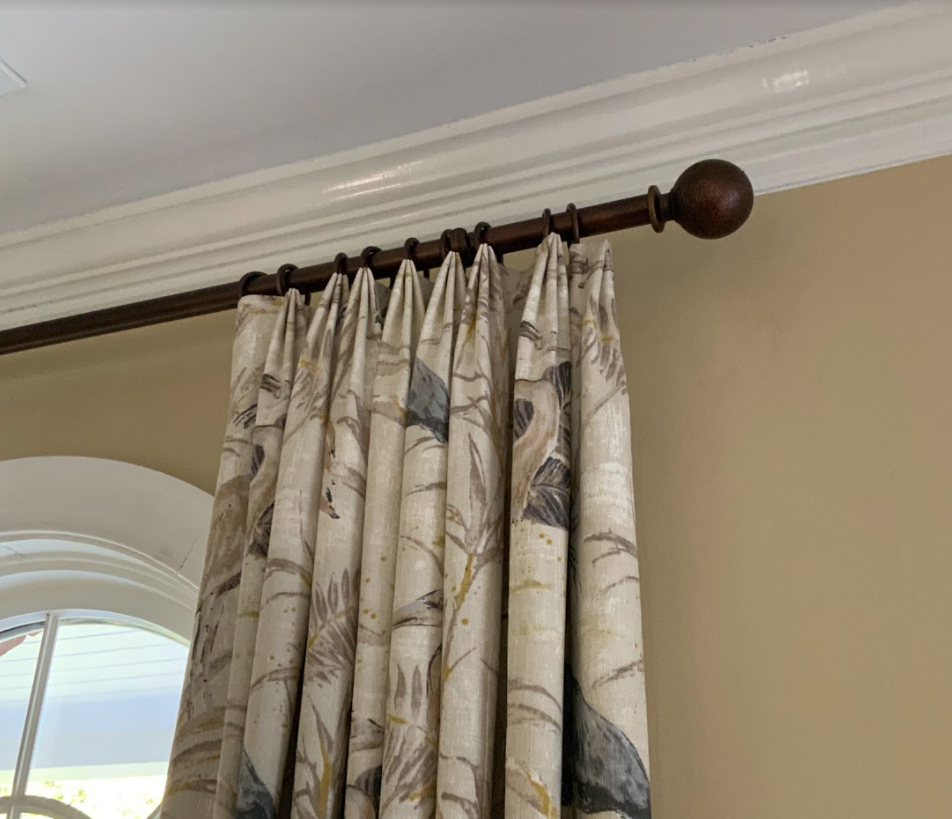A Closer Look at Custom Drapery
/There are many benefits to custom drapery, from endless design options to functional qualities like light control and sound reduction. While selecting fabric and trim may be the first thing that comes to mind when designing your custom drapery, there are other important details to consider.
Drapery Fullness & Pleat Style
Drapery fullness refers to the amount of fabric used to create custom drapery. At Savannah Window Fashions, our preferred fullness is 250%, meaning the fabric width is 2.5 times the width of the window opening. This creates the high end look associated with custom drapery. Pleat style is a big factor in determining the fullness of your custom drapery. A traditional three prong pleat requires more fabric, and thus a higher fullness, than a two prong pleat, which only requires 200% fullness (read more on pleat style below).
The type of fabric selected also impacts the fullness of your drapery. Sheer drapery fabrics may look best at 300% full, because they do not have the additional layer of lining to fill them out. Which brings us to another important element of custom drapery, linings and interlinings.
Linings and Interlinings
Drapery linings and interlinings play an important role in custom treatments. Not only does the added layer of fabric improve the appearance of your custom drapery, it also protects your face fabric from the sun, extending the life of your drapery and protecting your furnishings from UV Damage.
Linings come in a wide variety of colors, materials and opacities. At Savannah Window Fashions our standard lining is a cotton sateen in pale ivory. We also offer options like silky blackout for room darkening, rain no stain for historic homes where slight water intrusion may occur around windows, and lightweight cotton for thinner fabric selections.
In addition to your standard drapery linings, interlining is available for a more luxurious finish to your custom drapes. Interlining also serves a functional purpose, further improving energy efficiency and reducing sound pollution.
As a full service custom window treatment design firm, we have conversations with our designer, trade and retail clients to understand and select the best lining and interlining options for your custom drapery projects.
Drapery Pleats
In addition to the relationship between pleats and fullness, there are other things to keep in mind when choosing a pleat style. Some pleats are better suited to stationary panels, such as goblet pleats and box pleats, while pinch pleats and euro pleats lend themselves well to either stationary or traversing drapery.
The amount of fabric taken up in pleats also impacts the stack of your drapery, which is how much space traversing panels take up when the drapery is in the open position. If preserving your view is important, you want to keep as much fabric as possible off of the window glass, which is accomplished by adjusting the length of your drapery hardware and the count and fullness of your pleats.
Design and Fabric Selection
Selecting fabric and trim is undoubtedly the fun part of the design process when it comes to custom drapery. Keep in mind however, that fabric selections can make or break the functionality of your drapery. Natural fibers present challenges with humidity changes (linen can grow several inches from temperature changes alone!), while busy patterns often call for more yardage to ensure patterns match properly.
Fabric selections can make or break the look and function of custom drapes. The way a fabric behaves will depend on the material it is made from, and fabrics with large or busy patterns will need careful consideration during fabrication for pattern placement.
Custom window treatments are complicated, and while we love talking through these details with our clients, we also know that not everyone gets as excited as we do about linings and pleats. That’s why choosing an experienced drapery workroom partner is so important. Savannah Window Fashions specializes in providing expert advice and guidance for all the decisions that go into your window treatments.
Our full-service, project management approach means we handle all the details for you, from design, to measurements and fabrication, and professional installation. Let’s talk soon so we can get started on your project.






